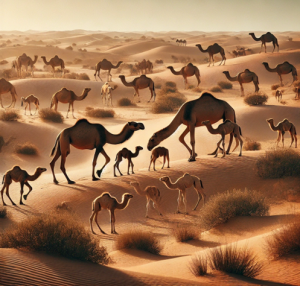
Significance of Camels in UAE: A Legacy of Resilience and Heritage
Camels have been an essential part of life in the Arabian Gulf for centuries, representing resilience, adaptability, and cultural heritage. Known as the "Ships of the Desert," camels were crucial for survival in one of the world’s harshest environments. Their ability to withstand extreme heat and endure long periods without water made them invaluable companions, providing transportation across the arid landscapes and enabling trade between distant regions.
Historically, camels played a significant economic role, offering milk, meat, and wool, which were essential for nourishment, clothing, and shelter. Their use in trade caravans helped establish commerce routes across the Arabian Peninsula, linking settlements and fostering economic growth. Today, camel milk remains a staple in the region’s diet, while their wool and leather have contributed to traditional crafts.
Culturally, camels have been celebrated in poetry, folklore, and traditions, symbolizing patience, endurance, and wealth. Owning camels was once a measure of social status, and they continue to be revered in modern times. Camel races and beauty contests are now major events that celebrate these animals' significance, drawing participants and spectators from around the world.
Camel racing, a sport with ancient roots, has evolved into a sophisticated and competitive industry. With advanced breeding programs and modern facilities, camel racing is a multimillion-dollar business. Technology like robotic jockeys has been introduced to improve animal welfare and optimize performance. Similarly, camel beauty contests have gained prominence, where prized camels are judged based on their appearance and grooming. These events offer significant financial rewards and recognition, enhancing the value of purebred camels and promoting their preservation. Despite advancements in technology, camels remain central to the Arabian Gulf’s identity. Beyond racing and beauty contests, they are integral to the region’s tourism industry, providing a connection to the traditional lifestyle through desert safaris and cultural tours. Their evolving role ensures that camels remain a living symbol of the Gulf’s history, resilience, and cultural pride. Today, camels bridge the gap between the past and the present, reflecting the spirit of the desert and its people while adapting to the demands of a modern world. Their legacy endures, making them an irreplaceable part of the Arabian Gulf’s heritage and a testament to the region’s enduring traditions and evolving cultural landscape.
